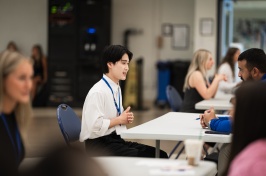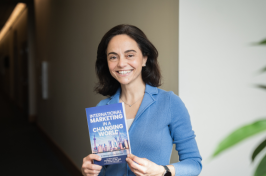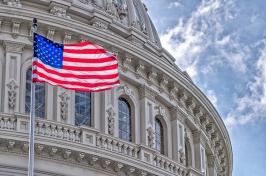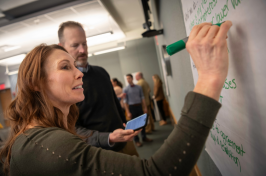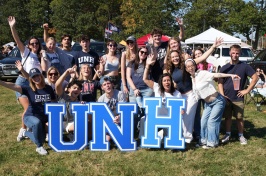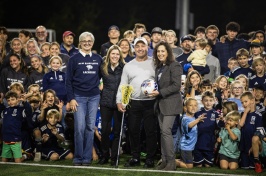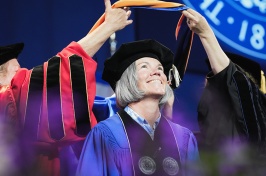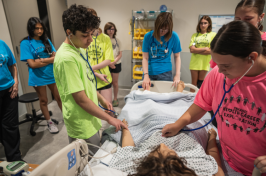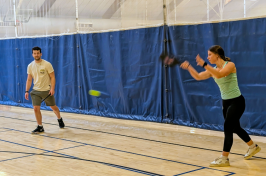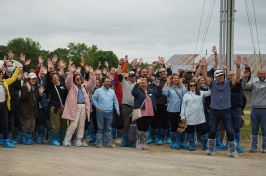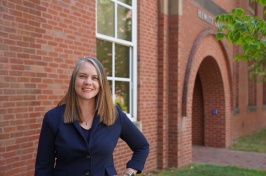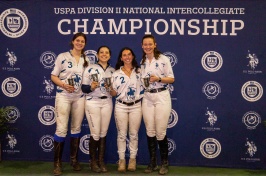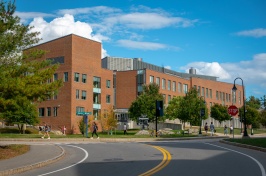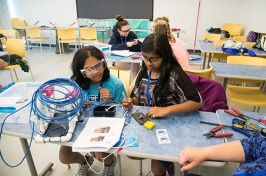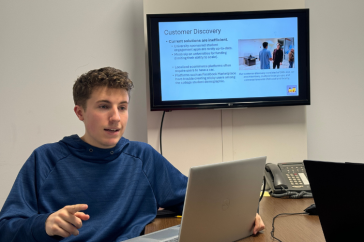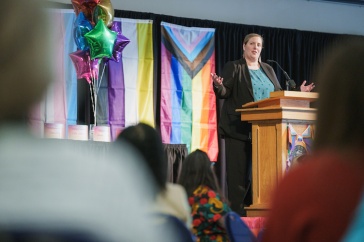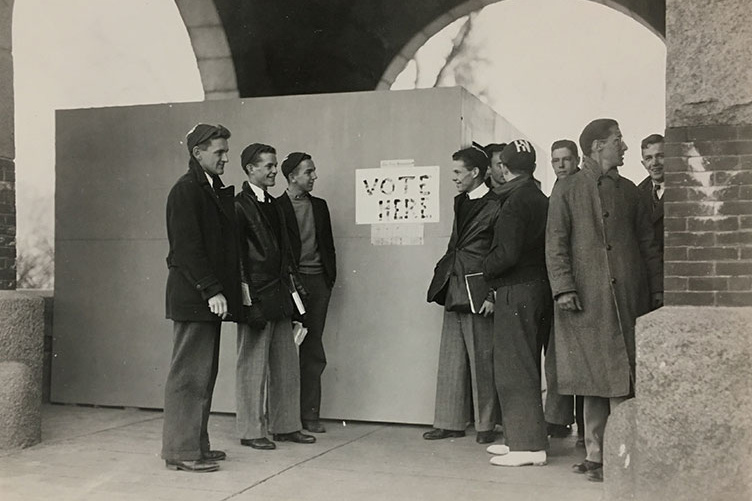
Students set up a voting booth under the arches of Thompson Hall to vote for the "mayor" of Durham. (Photo: University Archives)
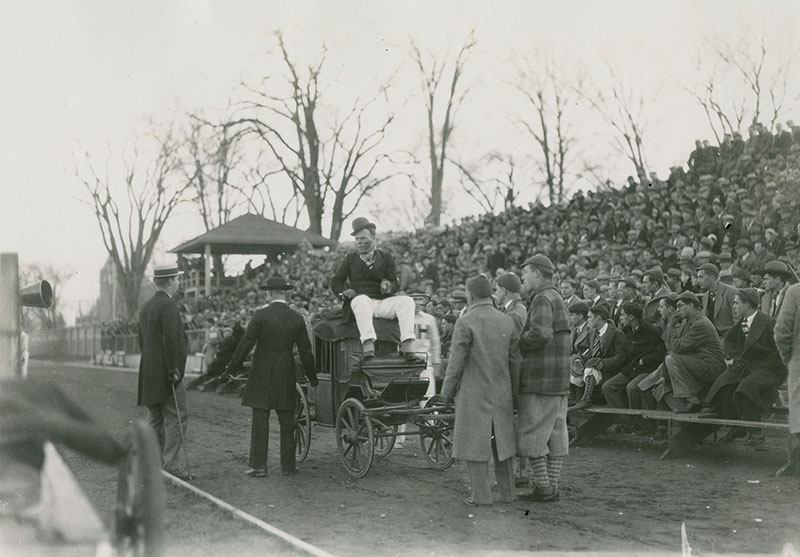
William Shaheen ’65 has had a long, distinguished career in law and politics. A former U.S. attorney, district court judge and the chairman of New Hampshire primary presidential campaigns for Jimmy Carter, Al Gore, John Kerry and Hillary Clinton, Shaheen has done it all. But he’s never run for public office himself. And that, he says, is all thanks to his failed 1964 campaign to be Durham’s unofficial “mayor.”
“It was my first election — and last,” Shaheen says, laughing. “It clearly told me I shouldn’t be running for office.”
Of course, it wasn’t a conventional sort of race. Called the “Mayoralty,” the mock election began in 1926 under the guidance of Blue Key, a senior men’s honor society, as a way to build up student camaraderie and school spirit before the homecoming football game each fall. During the next 40 years, the Mayoralty became its own raucous tradition, inspiring a host of crazy characters, mischievous antics and plenty of bad jokes.
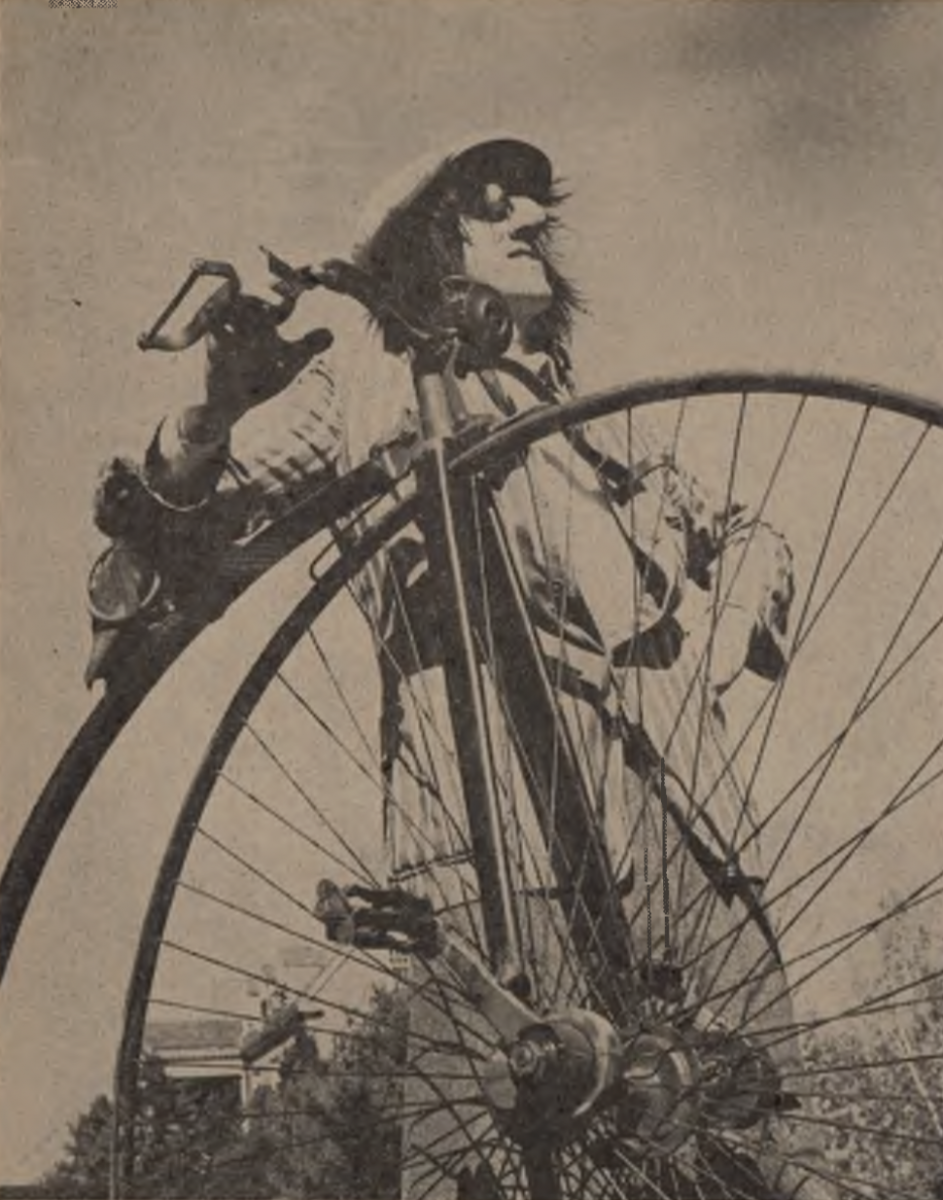
Delta was elected Durham’s mayor after a week
long campaign in which he competed with
Sigma Beta’s Mr. Jones, Acacia’s I. M. Skitzo,
Lambda Chi’s Draft Dog and ATO’s El Rancho."
(The New Hampshire, May 21, 1953)
Take, for example, the candidacy of movie producer I.C. Stars — otherwise known as Robert M. Hackett ’54, who won the 1952 Mayoralty race with a promise to make every UNH student a movie star.
“We’d gather in front of T-Hall, and everyone would make speeches and shout and make corny jokes,” says Hackett. Props helped: Hackett made a number of campaign appearances riding an old-fashioned high-wheel bicycle; his fraternity, Phi Mu Delta, stumped for him in an old Model A truck, and his friend Tom St. Cyr ’53 appeared at stump speeches dressed as silent film star Charlie Chaplin.
“He was probably the main reason why I got elected,” Hackett says. “After we won, we went to the different fraternities and sororities that backed us and said a few words and sang a few songs.”
About a half-dozen candidates, all sponsored by Greek organizations or campus dormitories, battled for the votes of the “citizens of Dur-Ham” for a week every October. There were speeches, parades and, on the Friday night before homecoming, a variety show put on by the candidates and their entourages. Students voted for their favorite mayor at the end of the show, and the winner appeared the next day during halftime at the football game.
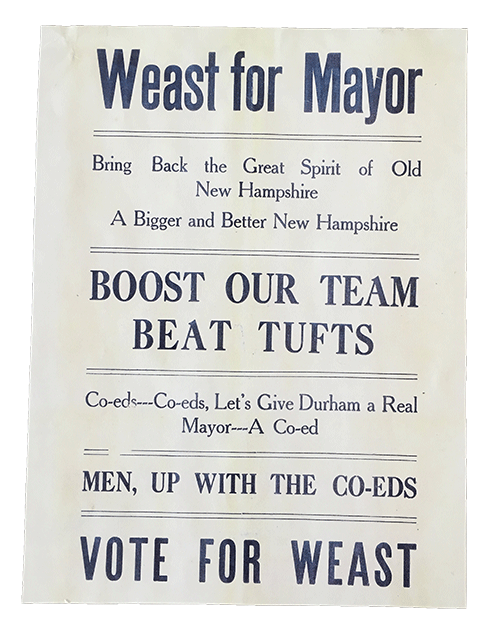
Florence Weast was the first woman to run for "mayor" of Durham. Read her own account of her 1929 campaign here.
There were no other, powers, responsibilities or privileges — not even a free parking space. When given the title “Mayor of Durham,” candidates received “all the rights and privileges that go with that title — of which there are none,” The New Hampshire wrote in 1954. The closest to real political power the Mayoralty ever got was in 1954 when, Hackett says, President Harry S. Truman visited campus. As mayor, Hackett was ready to don his I.C. Stars costume and present the president with a “key to the city” — except Truman’s car drove past T-Hall with the windows up and never stopped.
“It was a lot of fun,” says Jack Weeks ’55, who ran in 1953 as Frank Muck, a “big game hunter … with a safari of wild animals and a harem of dancing girls.”
That sort of outrageousness was common in Mayoralty campaigns. Phi Mu Delta member Frank Robie ’50 established his own political dynasty, first in 1948 as Threadbare McNair, with Ping-Pong ball eyes and a “soothing oratory (that) wound a majority into a horde of frenzied supporters,” and then a year later as Mary Margaret McNair, the only “woman” to win the race for mayor.
“We’d put on a cap and a wig and take Ping-Pong balls and cut them in half and glue them to some eye glasses,” Hackett says. It was a simpler era — there were only a few thousand students living on campus, and Durham had only two police officers, Hackett remembers. It was easier to draw a crowd and cause a little ruckus.
Like any campaign, though, the politics of the Mayoralty could get down and dirty. An Oct. 17, 1941, editorial in The New Hampshire cautioned against the “distasteful elements which seem to crop (up) every fall and which some immature students seem to feel are integral parts of the campaign.” In 1956, Blue Key had taken to reading and censoring campaign scripts before candidates delivered speeches or performed skits. According to the Oct. 7, 1954, edition of The New Hampshire, acting university president Edward D. Eddy “praised the work of Blue Key in keeping this year’s campaign in better taste.”
The Interfraternity Council and various Greek organizations took over sponsorship of Mayoralty in the mid-1950s. Keeping the candidates clean proved difficult. The 1964 campaign was especially controversial. Following the usual candidate speeches, The New Hampshire reported that “housemothers and townsfolk gasped, students cheered, booed or walked away in disgust and administrators shuddered.”
Shaheen ran that year as Count Dracula, complete with a retinue of mummies and ghouls that carried him around in a coffin and a campaign “wife” known as Vampira. “We said some pretty off-color stuff,” Shaheen admits. “There was a lot of jostling going on and a lot of competition.” But overall, the campaign “really energized the student body and the campus,” Shaheen says.

Despite a promise of “free blood drives — and I’d only take 10 percent,” Shaheen lost the race to James “Kach-us Klay” Kach ’66. Not that he’s bitter about it. “I always held that they stuffed the ballot box,” Shaheen jokes.
The last race was held in 1966. Only four candidates ran that year, and Dave “Jet-Bombed” Plewes, running on a platform of “motherhood, apple pie, hot dogs and T-Bird wine,” was elected the last mayor of Durham. Though it’s unlikely the Mayoralty will return, it’s worth remembering there is no shortage of second acts in politics.
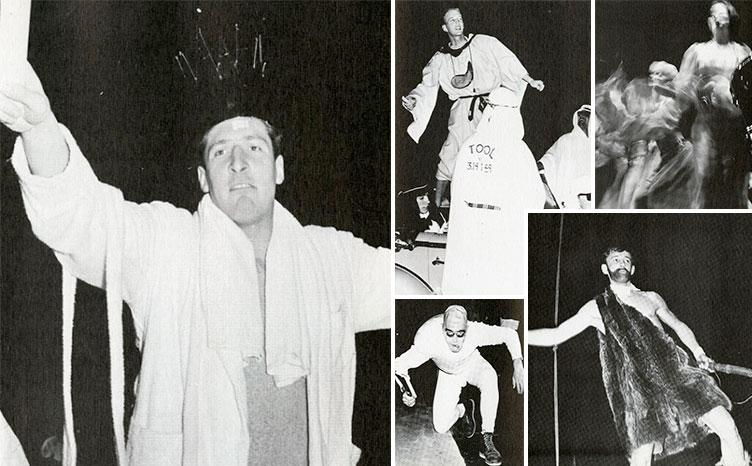
Some candidates and supporters from the 1964 campaign, which included Kach-us Klay, Dracula, Bacchus, Bedrock and Peter the Toole (Photos: The Granite, 1965)
Were you on campus during the Mayoralty years?
Share your memories here.
Comments
Your article about mayors of Durham brought back a great memory. In the late 1950s, Phi Mu Delta ran 5'2" Roger Duford as "Neander-tall." In addition to a very large dinosaur float, we had a campaign song that began with the words, "We're from the Stone Age, the raw meat and bone age, and we're for the best man who is Neander-tall!" Great fun and we won!!
— Peter Hollister '60
I remember Neanderthal Man — and Java Man worked the coffee machine at Commons! And does anyone else remember hearing their song on the carillon? — Fun times! As grade schoolers we used to join the parades at lunchtime on our way back to school — sometimes we were invited to ride on the floats.
— Barb (Schaefer) Lounsbury '60
-
Written By:
Larry Clow '12G | UNH Cooperative Extension
-
Compiled By:
Loren Marple ’13 | Communications and Public Affairs | Loren.Marple@unh.edu | 603-862-0600







